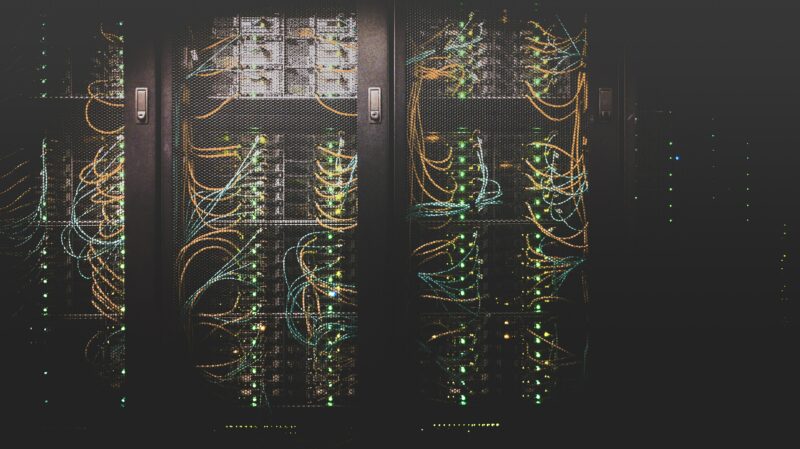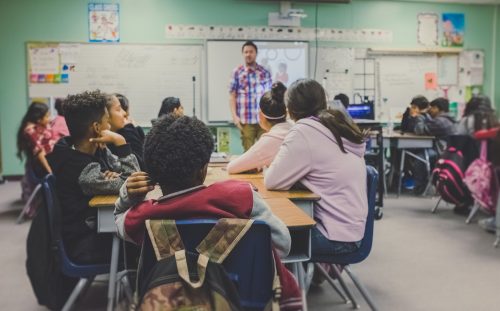The global IT industry generates as much CO2 as the aviation industry. In Hello World issue 17, we learn about the hidden impact of our IT use and the changes we can make from Beverly Clarke, national community manager for Computing at School and author of Computer Science Teacher: Insight Into the Computing Classroom.

Beverly Clarke  - Werbung -- Werbung -– Werbung –
- Werbung -- Werbung -– Werbung –Hello World issue 17
With the onset of the pandemic, the world seemed to shut down. Flights were grounded, fewer people were commuting, and companies and individuals increased their use of technology for work and communication. On the surface, this seemed like a positive time for the environment. However, I soon found myself wondering about the impact that this increased use of technology would have on our planet, in particular the increases in energy consumption and e-waste. This is a major social, moral, and ethical issue that is hiding in plain sight — green IT is big news.
This is a major social, moral, and ethical issue that is hiding in plain sight — green IT is big news.
Energy and data centres
Thinking that online is always better for the planet is not always as straightforward as it seems. If we choose to meet via conference call rather than travelling to a meeting, there are hidden environmental impacts to consider. If there are 50 people on a call from across the globe, all of the data generated is being routed around the world through data centres, and a lot of energy is being used. If all of those people are also using video, that is even more energy than audio only.

Not only is the amount of energy being used a concern, but we must also ask ourselves how these data centres are being powered. Is the energy they are using coming from a renewable source? If not, we may be replacing one environmental problem with another.
What about other areas of our lives, such as taking photos or filming videos? These two activities have probably increased as we have been separated from family and friends. They use energy, especially when the image or video is then shared with others around the world and consequently routed through data centres. A large amount of energy is being used, and more is used the further the image travels.
Not only is the amount of energy being used a concern, but we must also ask ourselves how these data centres are being powered.
Similarly, consider social media and the number of posts individuals and companies make on a daily basis. All of these are travelling through data centres and using energy, yet for the most part this is not visible to the user.
E-waste
E-waste is another green IT issue, and one that will only get worse as we rely on electronic devices more. As well as the potential eyesore of mountains of e-waste, there is also the impact upon the planet of mining the precious metals used in these electronics, such as gold, copper, aluminium, and steel.
The processes used to mine these metals lead to pollution, and we should also consider that some of the precious metals used in our devices could run out, as there is not an endless supply in the Earth’s surface.
It is also problematic that a lot of e-waste is sent to developing countries with limited recycling plants […].
It is also problematic that a lot of e-waste is sent to developing countries with limited recycling plants, and so much of the e-waste ends up in landfill. This can lead to toxic substances being leaked into the Earth’s surface.
First steps towards action
With my reflective hat on, I started to think about discussions we as teachers could have with pupils around this topic, and came up with the following:
- Help learners to talk about the cloud and where it is located. We can remind them that the cloud is a physical entity. Show them images of data centres to help make this real, and allow them to appreciate where the data we generate every day goes.
- Ask learners how many photos and videos they have on their devices, and where they think those items are stored. This can be extended to a year group or whole-school exercise so they can really appreciate the sheer amount of data being used and sent across the cloud, and how data centres fit with that energy consumption. I did this activity and found that I had 7163 photos and 304 videos on my phone — that’s using a lot of energy!

- Ask learners to research any local data centres and find out how many data centres there are in the world. You could then develop this into a discussion, including language related to data centres such as sensors, storage devices, cabling, and infrastructure. This helps learners to connect the theory to real-world examples.
- Ask learners to reflect upon how many devices they use that are connected to the Internet of Things.
- Consider for ourselves and ask parents, family, and friends how our online usage has changed since before the pandemic.
- Consider what happens to electronic devices when they are thrown away and become e-waste. Where does it all go? What is the effect of e-waste on communities and countries?
Tips for greener IT
UK-based educators can watch a recent episode of TV programme Dispatches that investigates the carbon footprint of the IT industry. You can add the following tips from the programme to your discussions:
- Turn off electronic devices when not in use
- Use audio only when on online calls
- Dispose of your old devices responsibly
- Look at company websites and see what their commitment is to green IT, and consider whether we should support companies whose commitment to the planet is poor
- Use WiFi instead of 3G/4G/5G, as it uses less energy
These lists are not exhaustive, but provide a good starting point for discussions with learners. We should all play our small part in ensuring that we #RestoreOurEarth — this year’s Earth Day theme — and having an awareness and understanding of the impact of our use of electronic devices is part of the way forward.
Some resources on green IT — do you have others?
What about you? In the comments below, share your thoughts, tips, and resources on green IT and how we can bring awareness of it to our learners and young people at home.
Website: LINK


